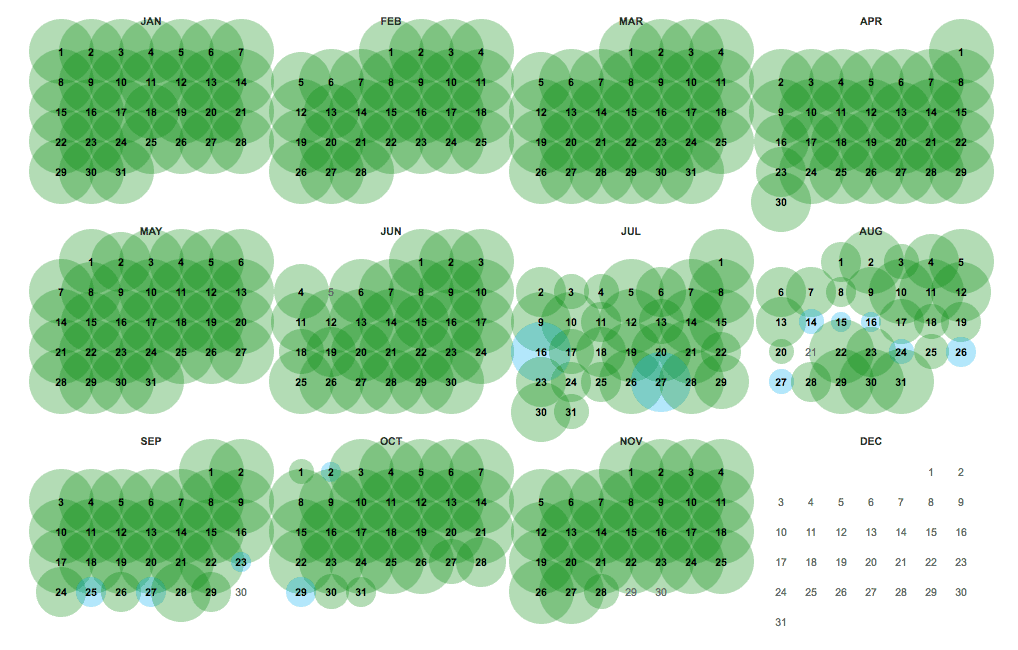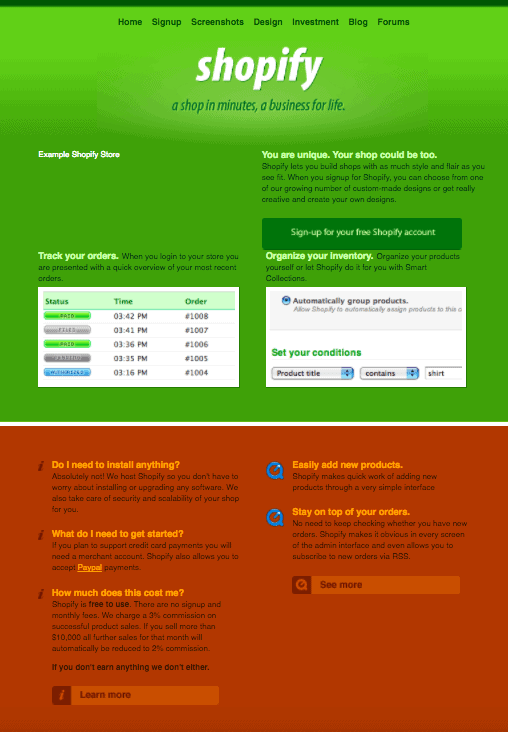This article explains how to spy on your competitors’ website with the Wayback Machine.
Wayback what?
You might not believe me.
But what if I told you time machines really do exist.
At least when it comes to the internet, time travel isn’t science fiction. With the help of the Wayback Machine you can go back in time and look at any website of a competitor.
The Wayback Machine is a digital archive of the World Wide Web. It automatically takes snapshots of websites as they progress through time. You can literally look at what your competitors’ websites looked like one year, two years or five years ago. This isn’t the only way to research your competitors, but it allows you to find out a few unique things about them.
How to Spy on Your Competitors’ Website with the Wayback Machine
Most competitor analysis software focuses on the present moment. Different tools let you spy on competitors’ Facebook ads, traffic volume, referrals, backlinks and other stuff. While some of them give you historic data about your competitors, most of them don’t.
So what can you learn about your competitors with the Wayback Machine?
Hers how to spy on your competitors’ website with the help of the Wayback Machine.
Simply visit the Wayback Machine internet archive.

Then type in any domain.
As I said, it’s literally like a time machine for the internet that allows you to go back as far as 1995. This means you can access pretty much any website and see how it evolved.
Wayback Machine will give you a timeline with available snapshots of the website.


Your competitors are constantly updating their landing pages, websites and copy to improve their online presence, increase their brand awareness and sell more products or services.
You can go to any competitor by visiting their website today.
And there’s a lot you can learn from that.
But you can learn equally as much from a past snapshot of a competitor’s website. For example, you can find old variations of a website that most likely converted worse than the current website. This gives you powerful insights into what your website probably shouldn’t look like.
So how do you spy on your competitors’ website using the Wayback Machine?
Look out for the following:
- How did your competitors’ business model evolve
- How did your competitors’ products and offers evolve
- How did your competitors’ web design and layout evolve
- How did the social media following of a brand grow over time
All of this will provide you with important information about how your competitors evolved over time. This is important because it gives you hints about what you should focus on to experience similar growth. And it can also be motivating to see how your competitors started.
How Did Your Competitors’ Business Model Change in the Past 10 Years?
Wayback Machine allows you to see how business models evolved.
For example, you can compare a competitors’ current business model with the business model they used ten years ago. This way you can learn what works and what doesn’t work right now.
Looking at your competitors’ current website will only give you limited information.
What’s amazing about Wayback Machine is that you also get the historic context of the business.
Seeing what your competitors’ website looks like today and what it looked like ten years ago, and the ability to compare them, makes all the difference. You can see how different business models showed up, evolved or completely disappeared over time. This allows you to gain insights into your niche and it’ll help you avoid mistakes others have made.
For example, here’s the homepage of Shopify ten years ago in 2007.

If you pay attention to their site, you’ll see that they didn’t charge a monthly fee back then.
They even highlighted the words “free to use” and emphasized that there are no signup and monthly fees. Their business model was centred around charging a 3% commission.
How well did that work out?
Probably not that well.
These days they charge a monthly fee anywhere between $29 and $299 instead of a commission. They also eliminated all transaction fees as long as you use their own payment gateway called Shopify Payments. As you can see their business model completely changed.
If you’re planning to sell your own e-commerce platform you should probably learn from their “mistakes” and charge a monthly fee right away instead of focussing on commissions.
Can you see how valuable this information is?
Let’s talk about some more ways you can spy on your competitors’ website.
How Did Your Competitors’ Offer or Product Change in the Past Years?
Here’s what the popular domain registration service GoDaddy looked like 17 years ago.

As you can see they called themselves “Go Daddy Software” and instead of selling domains they sold a software called “WebSite Complete” which allowed you to build websites.
What can you learn from this?
Maybe selling website building software isn’t so profitable.
Or at least, selling domains and web hosting, is a better business model.
GoDaddy completely switched from being a software company to being a domain registrar. Not only did they change their product but they changed their entire business model and focussed on selling primarily domains. Today, GoDaddy is the biggest domain registrar and an insanely profitable company. Let’s look at another way to spy on your competitors’ website.
How Did Your Competitors’ Web Design Evolve in the Past Years?
You can also get a feeling for how the design and layout evolved over time. It’s important to understand what type of design the big players in your industry have moved away from. This way you can avoid using outdated web design and graphics on your own website.
The last thing you want is to look like a site from five years ago.
Maybe with a few exceptions as you’ll see in a minute.
Here’s what Amazon looked like in 1998.

What’s interesting about Amazon is that their design didn’t change that much.
So what can you learn from this?
Having a simple layout with a ton of links and categories seems to work great for e-commerce. There aren’t a lot of distractions on the website and this hasn’t changed much. Removing distractions and keeping your e-commerce store simple can help you increase conversion rates.
Let’s conclude.
How can you spy on your competitors’ website with the Wayback Machine?
I think you’ll find dozens of ways to use the tool.
To make this article more fun I used popular websites like Shopify, GoDaddy and Amazon.
But you can use the Wayback Machine to spy on any website. Sometimes I get nostalgic and look at what my own websites looked like three years ago. It’s actually really fun to do.
You can also use the Wayback Machine to see how someone’s social media following evolved.
Here’s how many subscribers YouTube celebrity Jake Paul had in 2015.

He only had 60,644 subscribers.
Today he has over 12,000,000 subscribers on YouTube.
Sometimes it’s motivating to look up a big brand and see how they evolved over time. You’ll realize that everyone started with just one subscriber and nobody got big over night. I occasionally use the Wayback Machine to get this boost of motivation and realism.
What one person did another person can do.
Let me know in the comments how you’re going to use the Wayback Machine?




